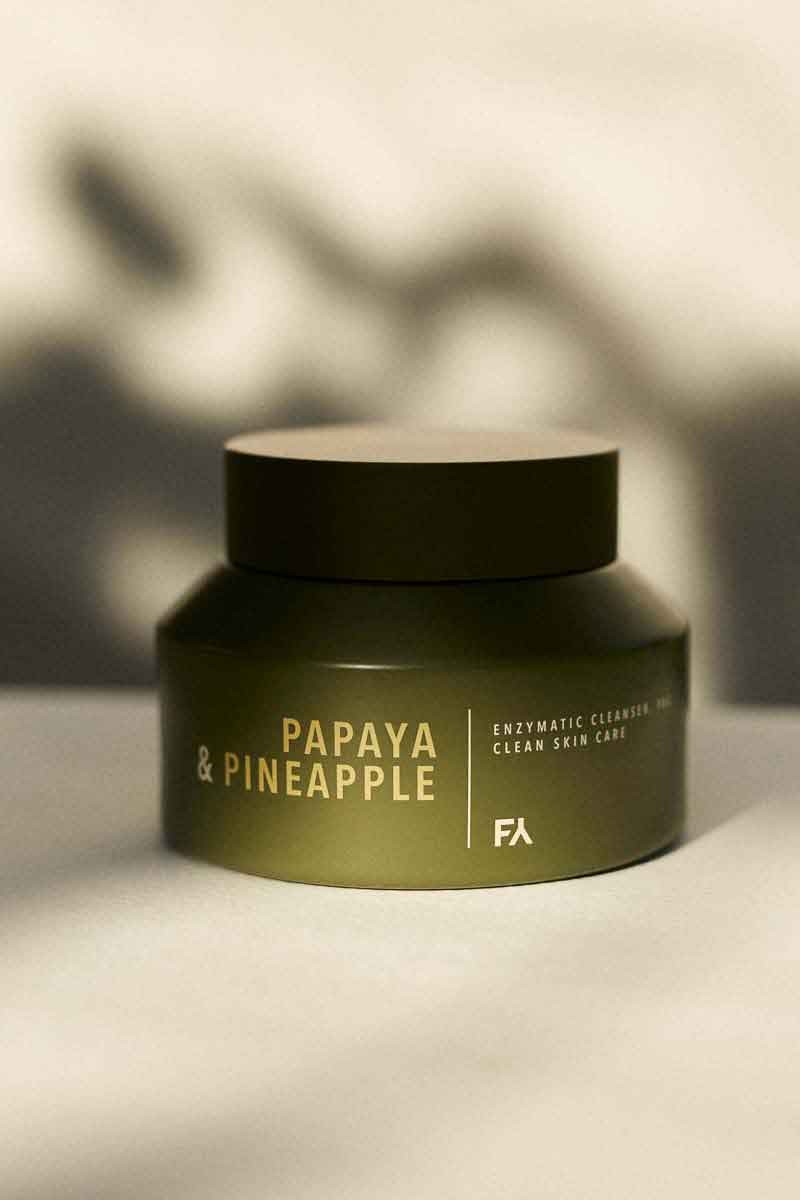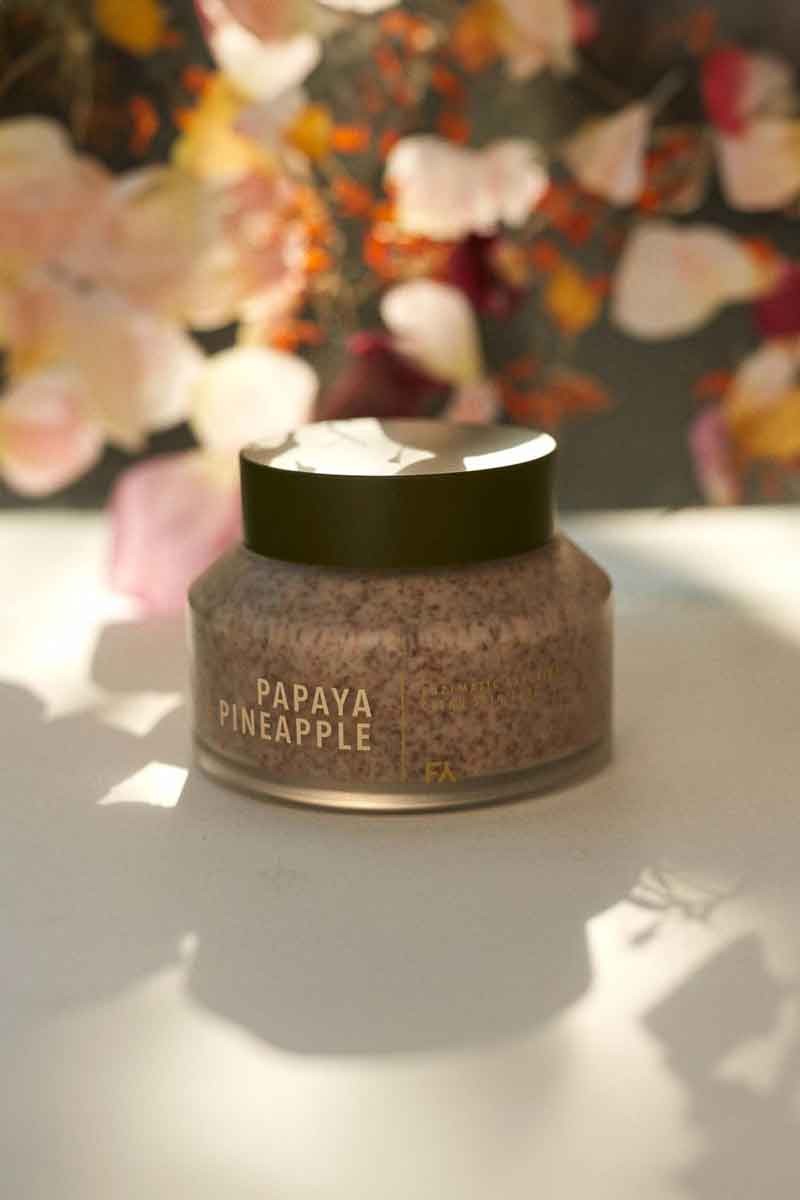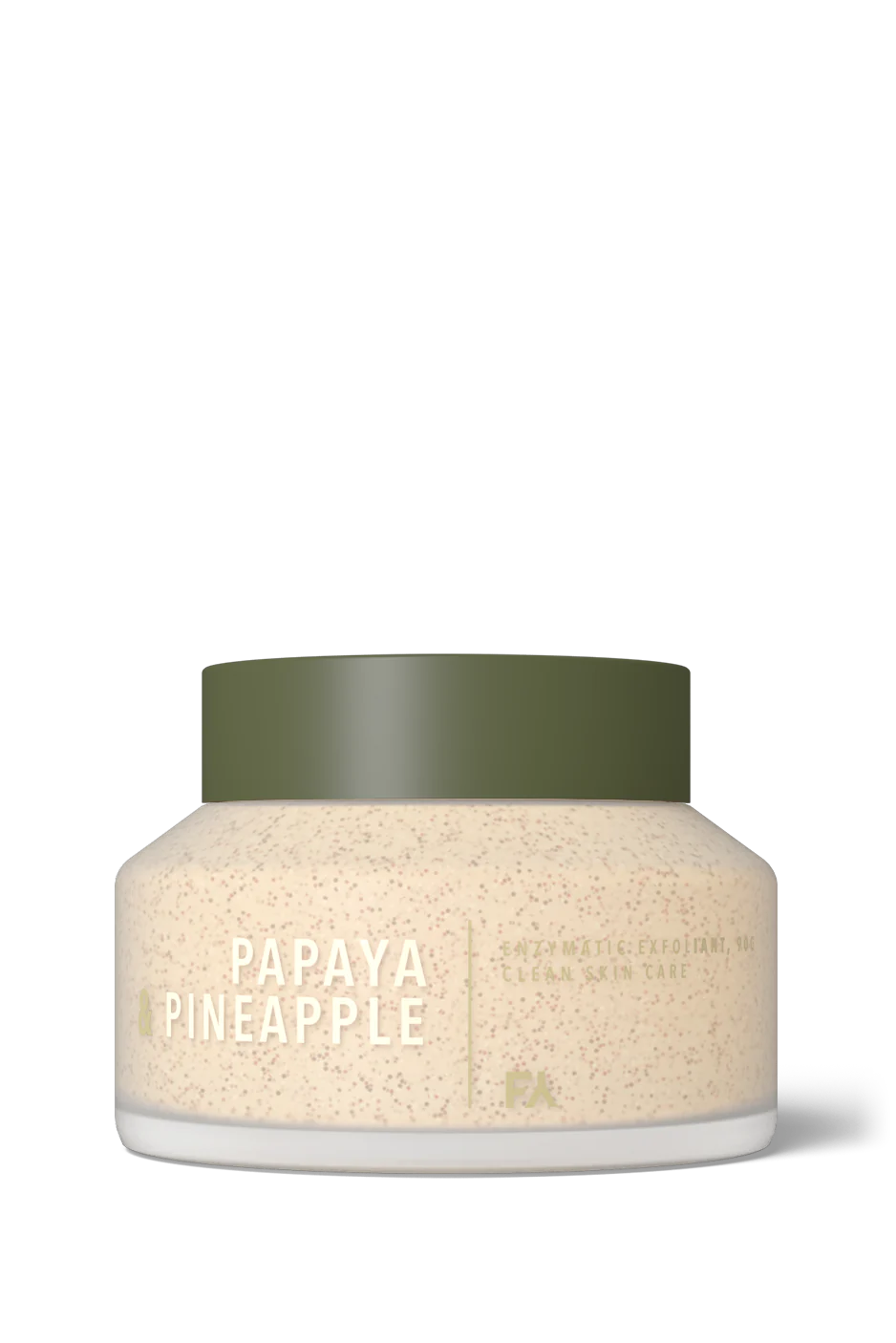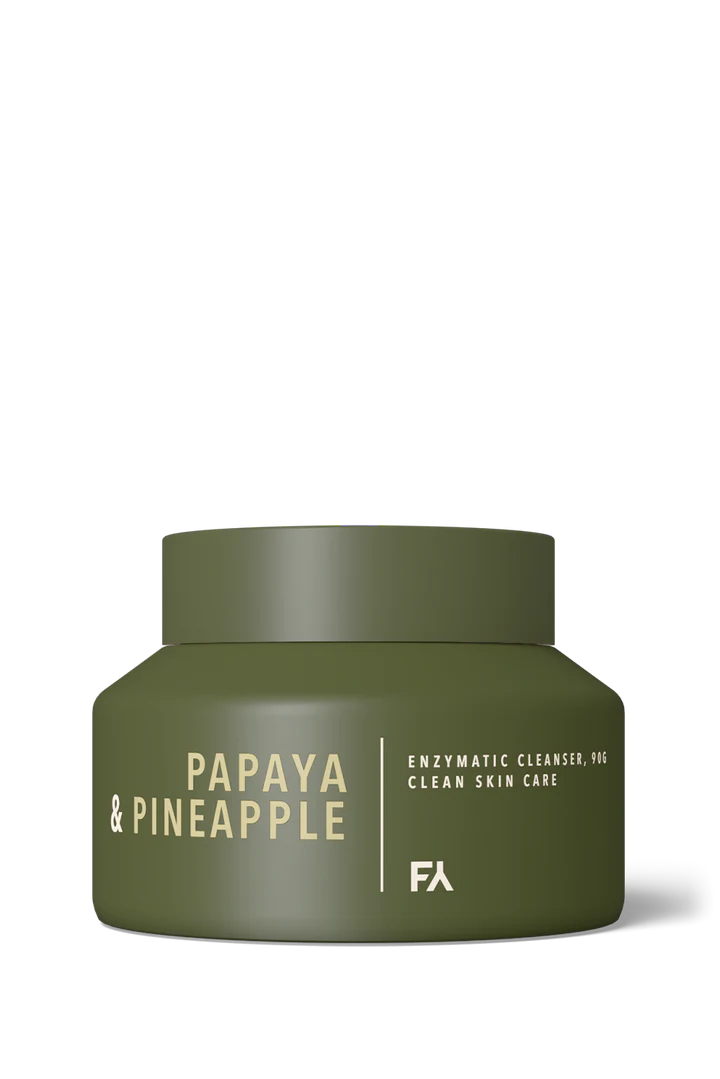Whenever I think of exfoliation, most people picture a sandpaper-like paste that you rub into your skin once a week. And it’s not wrong. But rarely we think of enzymatic exfoliation, done trough agents that work at a cellular level.
Today, I’ll tell you all you need to know on enzymatic exfoliants. We’ll talk about the different types of exfoliations available so that you can choose the one (or ones) that best adapt to your unique situation.
What is Exfoliation
Exfoliation is a process that aids in skin cell renewal. Through different methods, it removes keratinized cells from the outermost layer of our skin. By washing away this unnecessary layer, you can also increase the absorption of the active ingredients in your skincare products.
How to Achieve a Glowing Complexion
All this while eliminating impurities, improving your skin’s texture and uniformity, and generally improving your skin’s appearance. So, the idea of exfoliating only once a week is something of the past. Many new products can be used daily, even by people with sensitive skin. If you’re #TeamOnceAWeek, it’s fine. Exfoliating will still deliver you great results.
This might also interest you: How to Achieve a Glowing Complexion with a Weekly Skincare Routine



Understanding Exfoliation
Exfoliation is the process of removing impurities and keratinized cells from the skin’s surface and thinning and making the stratum corneum uniform. It facilitates the penetration of cosmetically active ingredients, resulting in healthier-looking skin with an improved aesthetic appearance.
There are three different types:
- Mechanical Exfoliation: This is the most common one. Its basis is the physical scrubbing of the skin with a mild abrasive (sandpaper style). These abrasives can be micro-fibers, crushed apricot kernels, or almond shells. Even sugar and sea salt are used.
- Chemical Exfoliation: It’s the use of acids in the formulas of skincare products. These acidic ingredients usually have a pH of 5 or less, and they remove old layers of skin.
- Enzymatic Exfoliation: The use of proteolytic enzymes naturally breaks down the keratin proteins that bind dead skin cells together. They accelerate the natural chemical reactions on our skin by promoting a biological exfoliation. They also come with the huge added benefit of being more eco-friendly than other alternatives.
Papaya & Pineapple
Papaya & Pineapple Enzymatic Exfoliant is the ultimate solution for achieving a healthy and glowing complexion. Enjoy a natural, effective mechanical and enzymatic exfoliation, suitable for all skin types.
The Power of Enzymes
Enzymocosmetics, or products that contain natural enzymes, are a great addition to any skincare routine. The main plant proteolytic enzymes used in skin exfoliation are papain from papaya, bromelain from pineapple, and ficain from fig tree. These remarkable enzymes work as a natural exfoliant by breaking down dead skin cells, revealing fresh, rejuvenated skin beneath. How do they do it?
- Gentle Exfoliation: Enzymes are renowned for their ability to exfoliate without the abrasiveness of traditional mechanical scrubs. They dissolve dead skin cells, making them an excellent choice for even the most sensitive skin types.
- Brighter Complexion: Enzymes leave your skin looking brighter and more radiant by gently removing the outer layer of dull, dead skin cells. The result is a fresher, more youthful appearance.
- Improved Texture: Regular use of enzymes can help improve skin texture, leaving it smoother and softer.
- Reduced Acne and Breakouts: Enzymes can also help to clear clogged pores, reducing the likelihood of acne and breakouts. This makes them an excellent choice for those with blemish-prone skin.
One of the key advantages of enzymes is their suitability for daily use. By breaking down the protein that binds dead cells together, it accelerates the natural biological exfoliation of our skin.
An enzymatic exfoliation carries less risk of irritation than a mechanical or chemical peel because it bases its efficacity on an already occurring natural process of our skin.
Top 3 Benefits of Enzymatic Exfoliation
Even Skin Tone and Reduction in Fine Lines and Wrinkles
Do you struggle with uneven skin tone, pigmentation, or dark spots? Enzymes can be your ticket to a more balanced complexion. They work by removing the top layer of damaged, discolored skin, promoting an even skin tone over time. Whether you’re dealing with sunspots, age spots, or post-inflammatory hyperpigmentation, enzymes can be a game-changer. They also have the ability of reducing the visibility of fine lines and target wrinkles at a deeper level.
Minimized Pore Appearance and Combating Acne and Breakouts
Enlarged pores are a common concern, often associated with excess sebum production and a buildup of dead skin cells. Enzymes gently dissolve these impurities, resulting in minimized pore appearance and a smoother, more refined complexion.
Natural and Sustainable
One of the key advantages of enzymes is their natural and sustainable source – fruits. This eco-friendly approach to skincare ensures that you’re benefiting your skin and contributing to a more environmentally conscious beauty regimen.
Hibiscus: The Natural Anti-Aging Ingredient
How to Incorporate Papain Enzymes into Your Routine:
To experience the full range of benefits enzymes have to offer, consider the following:
- Cleanser: Look for a daily cleanser that contains enzymes. This ensures you benefit from daily microexfoliation and a refreshed, clean canvas for your skincare routine. This Papaya & Pineapple Enzymatic Cleanser has been described as “The Best-Kept Secret in the Skincare World”.
- Toner: A toner is a great way to boost radiance and texture. The Papaya & Moringa Brightening Essence is nature’s gift to skincare. Do you know the benefits of Moringa for your skin?
- Exfoliating Masks: Weekly exfoliating masks with enzymes can provide a more intensive treatment. They help remove deeper impurities and promote a smoother complexion. A great example is this Papaya & Pineapple Enzymatic Exfoliant formulated with Hibiscus, a flower called “The Botox Plant”.
Since we have mentioned in the last lines of this article Hibiscus’ second name, “the botox plant”, I wanted to conclude this article with the suggestion to discover Hibiscus’ great properties and effects on your skin, which when combined with an enzymatic exfoliant or cleanser, really brings on its wonders.









